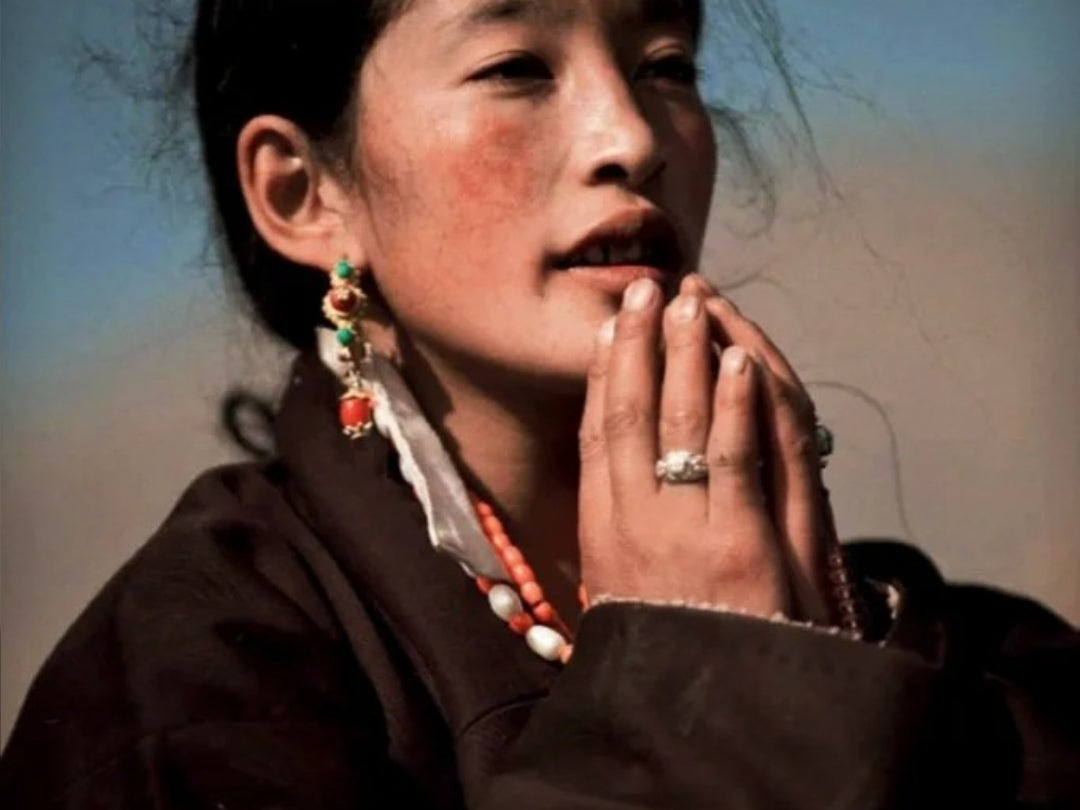In Tibetan Buddhism’s tantric systems, the four “methods” (Sanskrit: karman; Tibetan: ’dus pa)—Peace, Growth, Harmony, and Subjugate—serve distinct yet complementary roles in a practitioner’s path. Each method addresses specific challenges: dispelling obstacles, accumulating merit, attracting support, and overcoming inner and outer adversaries. Traditionally, these methods are supported by wearing colored or material-specific beads that resonate with each function’s energetic quality.
The Four Methods
Peace (息法)
-
Function: Pacifies disasters, conflicts, and negative energies. Creates a calm, protected environment for practice.
-
Color & Symbol: White signifies purity and clarity, reflecting the quelling of afflictive forces.
-
Recommended Jewelry: White crystal mala or bracelet—natural quartz or white jade beads help stabilize the mind and clear negativity.
-
Practice Example: Vajrasattva recitation, whose six-syllable mantra “Oṃ Vajrasattva hūṃ” is famed for purification and bringing peace.
Growth (增法)
-
Function: Increases merit, wisdom, lifespan, wealth, and spiritual qualities.
-
Color & Symbol: Yellow represents abundance and fruition.
-
Recommended Jewelry: Honey amber or citrine bead malas—these golden stones embody fullness and support accumulation of good fortune.
Harmony (怀法)
-
Function: Magnetizes allies, fosters devotion, and unites practitioners with protective forces.
-
Color & Symbol: Red embodies loving-kindness and attraction.
-
Recommended Jewelry: Red agate or carnelian bracelets—red stones enhance the power to draw supportive relationships and inspire faith.
Subjugate (诛法)
-
Function: Destroys harmful forces, subdues unwholesome influences, and protects the Dharma.
-
Color & Symbol: Black or deep blue signifies uncompromising strength and wisdom.
-
Recommended Jewelry: Black tourmaline or obsidian beads—these dark stones shield against negativity and reinforce inner resilience.
Bead Color Guide: Many Tibetan mala makers align bead colors with these four methods: white for Peace, yellow for Growth, red for Harmony, and black for Subjugate.
Detailed Insights into Each Method
1. Peace Practice
Known as śamana or “pacifying” practice, this method uses mantras like Vajrasattva to clear karmic obscurations. Daily recitation, combined with white crystal beads, creates an energetic buffer against external chaos and internal restlessness.
2. Growth Practice
Also called puṇya or merit-accumulating practice, Growth involves practices such as Manjushri mantra for wisdom or Jambhala sādhanas for wealth. Wearing yellow gemstones keeps the intention focused on expanding one’s spiritual and material resources.
3. Harmony Practice
Called ākarṣaṇa, Harmony focuses on building spiritual community and devotional power. Practitioners may engage in Chenrezig (Avalokiteshvara) practices, while red bead jewelry acts as a continual reminder to cultivate compassion and draw auspicious connections.
4. Subjugate Practice
Known as vidhāna, Subjugate employs wrathful deities like Mahākāla or Yamantaka to conquer obstacles that resist gentler methods. Incorporating black protective stones supports practitioners when undertaking these fierce, protective rituals.
Integrating the Four Methods in Jewelry
At QiLing Aura, our designs blend these ancient principles with mindful craftsmanship:
-
Multi-Method Bracelets: Combine white, yellow, red, and black beads on a single strand to support all four practices throughout the day.
-
Method-Specific Pendants: Carve mantras or deities associated with each method onto corresponding colored stones set in sterling silver.
-
Wear with Intention: Before putting on your jewelry, set a clear intention for which method you wish to emphasize—Peace, Growth, Harmony, or Subjugate—and let the piece serve as a living reminder of your practice.
By aligning your adornments with these time-honored Tibetan methods, you create a personal talisman that both reflects and reinforces your spiritual path, turning every moment into an opportunity for transformation.








